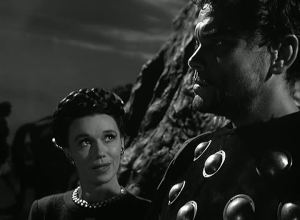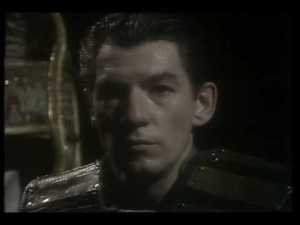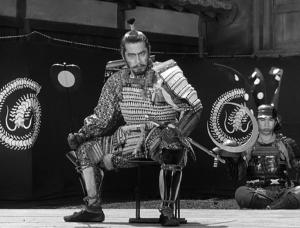 Author’s Note: This piece was written due to the fact that I attended four performances of the play ‘Sleep No More’, an adaptation of ‘Macbeth’, in 2012. Four sounds like a lot, but SNM is not a usual play. It is an immersive theater piece which in staged in a six-story warehouse outfitted as a hotel from the 1930’s, the story told in dance, the audience following the actors while wearing masks. Yes, you must wear a mask and run about the most magical, errie set while watching the murder’s unfold. I had to research a lot of ‘Macbeth’ while attending because there is no speaking by the actors and you enter the scenes while already in progress. You must piece together who is who and what part of the play you are in. There are also characters from Hitchcock films thrown in to confuse you more. Trust me, this is the most reality-alterning art experience; you feel strange, changed for days afterward. A tip: play cards with the Speakeasy Bartender or flirt with him(no talking allowed) and you may receive a shot of whiskey. Cheers.
Author’s Note: This piece was written due to the fact that I attended four performances of the play ‘Sleep No More’, an adaptation of ‘Macbeth’, in 2012. Four sounds like a lot, but SNM is not a usual play. It is an immersive theater piece which in staged in a six-story warehouse outfitted as a hotel from the 1930’s, the story told in dance, the audience following the actors while wearing masks. Yes, you must wear a mask and run about the most magical, errie set while watching the murder’s unfold. I had to research a lot of ‘Macbeth’ while attending because there is no speaking by the actors and you enter the scenes while already in progress. You must piece together who is who and what part of the play you are in. There are also characters from Hitchcock films thrown in to confuse you more. Trust me, this is the most reality-alterning art experience; you feel strange, changed for days afterward. A tip: play cards with the Speakeasy Bartender or flirt with him(no talking allowed) and you may receive a shot of whiskey. Cheers.
William Shakespeare’s 1606 play Macbeth has spawned many film adaptations which vary greatly in their presentation of the tragic tale. The play begins with prophecies that Macbeth is told of by mysterious witches of his impending rise to power. Macbeth and his wife are so enraptured by the prophecies of power and wealth that they plot to murder those obstructing their rise. Inevitably, the toll of deceit and murder destroy Lady Macbeth and Macbeth’s psyches and lives. Macbeth’s famous soliloquy from Act 5, Scene 5 epitomizes the depth of human misery that the play conveys:
“She should have died hereafter.
There would have been a time for such a word.
Tomorrow, and tomorrow, and tomorrow,
Creeps in this petty pace from day to day
To the last syllable of recorded time,
And all our yesterdays have lighted fools
The way to dusty death. Out, out, brief candle!
Life’s but a walking shadow, a poor player
That struts and frets his hour upon the stage
And then is heard no more. It is a tale
Told by an idiot, full of sound and fury,
Signifying nothing.”
Macbeth (1948) directed by Orson Welles
Welles version of Macbeth is a fairly odd, yet successful adaptation of The Scottish Play. Fairly odd is an apt description due to the fact that this film was produced very quickly and has the feel of a low-budget feature. Neither the costume design nor the set are indicative of Scotland in the 11th century and the actors put on rather questionable Scottish accents, yet this film is a strong example of a Shakespearean play adapted to screen. Welles plays the title character himself and fills the doomed man with insistent ambition and later, complete emptiness. A director playing the main character may seem egocentric, but Welles is restrained with this delivery. The famous Act 5 soliloquy does not even feature Welles’ face; instead a shot of clouds appear with the morose words in voice-over, which lends well to the complete despair of that speech. The director’s cinematic gifts are in high relief in this film. The tracking shots and dynamic performances from the cast illustrate that even with a rushed shooting schedule and sparse budget, Welles could deliver an engaging tale.
A Performance of Macbeth (1979) BBC TV
A Performance of Macbeth is a highly unusual staging of this play; comprised of a sparse set and modern costumes. If one ventures to watch this, one must be very familiar with the play or they may find themselves utterly confused. The acting in this film is exceptional; Ian McKellan as Macbeth and Judi Dench as Lady Macbeth deliver their lines with expertise and authority; as well as Ian McDiarmid, famously known as the The Emperor in Star Wars, playing a drunken Porter. Despite the masterful acting, this interpretation expects that the audience knows all of the nuances of the play, which if not well-versed, will leave the viewer cross. Actors appear and disappear from the frame randomly, and a few actors play multiple roles, which is hard to follow with such pared-down sets and costumes. This is a worthwhile adaptation for those who have a great deal of Shakespearian knowledge, but for the novice viewer this is not the best avenue to start exploring this turbulent tale.
Throne of Blood (1957) directed by Akira Kurosawa
Throne of Blood would seem at first glance to be exceedingly different from the original Shakespearian text, yet that is not the case. Kurosawa’s interpretation of Macbeth translated to feudal Japan is exceptional in that it illustrates that the appetite for power infects all men. The literary critic Harold Bloom described this film thusly:
“There is nothing specifically anti-Christian in his crimes; they would offend virtually every vision of the sacred and the moral that human chronicle has known. That may be why Akira Kurosawa’s Throne of Blood is so uncannily the most successful film version of Macbeth, though it departs very far from the specifics of Shakespeare’s play. Macbeth’s tragedy, like Hamlet’s, Lear’s, and Othello’s, is so universal that a strictly Christian context is inadequate to it.”(Bloom, p. 519)
This interpretation is entirely correct; though the characters and settings in Kurosawa’s film are not what Shakespeare would have envisioned, the story of damning ambition still shines through. The special effects in this film are also not to be missed; the final battle is a feat of cinematic brilliance. The scale of this film is not as grand as Kurosawa’s Ran (his version of King Lear) but is a worthwhile viewing experience due to the creativity of the director’s vision.
Bloom, H. (1998). Shakespeare: The invention of the human. New York: Riverhead Books.


